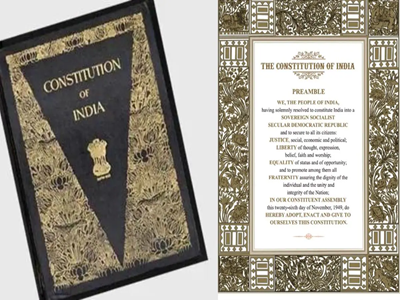TOWARDS A CASTELESS SOCIETY: The Journey and The Challenge
Date: November 08, 2025
The hierarchical caste system in Indian society is unlike anything found elsewhere in the world. For centuries, our nation has suffered under the weight of this deeply entrenched social order. The origins of the caste system are often debated, but the Chaturvarna doctrine propagated by Brahminical interests divided society into rigid groups, reducing the majority to subservience. Deprived even of education, these communities faced an injustice that persisted for thousands of years.
A New Dawn After Independence

With the advent of independence, the Indian Constitution, under the visionary leadership of Dr. B. R. Ambedkar, ushered in hope for the oppressed. It abolished untouchability, outlawed discrimination, and enshrined equality and opportunity for all citizens. Yet, despite these legal guarantees, the full realization of social equality remains elusive due to the lack of sincere implementation by successive governments.
The Role of Kula Nirmulana Sangham
Since its inception, the Kula Nirmulana Sangham (Casteless Society of India) has been at the forefront of the movement to eradicate caste. Over the past five decades, the Sangham has organized thousands of inter-caste and inter-religious marriages, alongside numerous conferences and awareness programs.
Its tireless advocacy led to the revision and enhancement of the incentive award for inter-caste marriages, now standing at **Rs. 2,50,000**. The Sangham also played a direct role in the establishment of the Justice Punnaiah Commission, which made key recommendations such as 1% reservation for the children of inter-caste couples, though these remain unimplemented.
Celebrating Equality: The Annual Mela
Every year, on Republic Day, the Sangham organizes a get-together of Inter-caste and Inter-religious married couples at Indira Park, Hyderabad. Hundreds of ideal couples participate, sharing their experiences and inspiring others. The event also includes the celebration of new inter-caste and inter-faith marriages. Through such initiatives, the Sangham continues to extend its support to couples who choose love over caste and religion.
Rising Challenges in Modern Times

Unfortunately, caste-based violence once concentrated in North India, has increasingly spread southward. Even in the progressive state of Telangana, over **140 caste-related murders** have occurred since its formation, with justice served in only a handful of cases. Disturbingly, some groups have begun glorifying such acts on social media. This toxic trend underscores the urgent need for awareness, legal protection, and strong societal condemnation.
The Path Forward
To safeguard those who defy caste and religious barriers, we must enact comprehensive legislation and foster a culture of equality. Among the key measures proposed are:
- Enactment of an “Inter-caste and Inter-religious Marriage Protection Act” to protect couples and punish those who harass or harm them.
- Creation of a permanent commission to prevent caste-based murders and address related issues.
- Formation of a special corporation to ensure the financial welfare of inter-caste and inter-religious married couples.
- Reservation of at least 5% in jobs and education for such couples and their children, recognizing them as “Ideal Indians”.
- Priority access to all government welfare schemes and healthcare without discrimination.
- Dedicated marriage registration rooms in all registrar offices for inter-caste and inter-religious marriages.
- Increased marriage incentive of Rs. 10,00,000 for all inter-caste and inter-religious couples, regardless of community.
A Call to the Youth
The future of a casteless India lies in the hands of today’s youth. They must reject the chains of caste, religion, and inherited kinship in their relationships and marriages. True equality begins when we embrace one another as human beings, beyond the boundaries of birth and belief.
As Dr. B.R. Ambedkar asserted in Annihilation of Caste, the real remedy for caste eradication lies in inter-marriage, for only the fusion of blood can create the genuine feeling of being kindred and erase the sense of separation that caste has built over centuries.
In our times, this fusion is symbolic. Through inter-caste and inter-religious marriages, we infuse society with new hope, empathy, and unity. Let us therefore honour such couples and their children as the **true torchbearers of a new India**, one that stands free from prejudice, division, and the false hierarchies of caste.